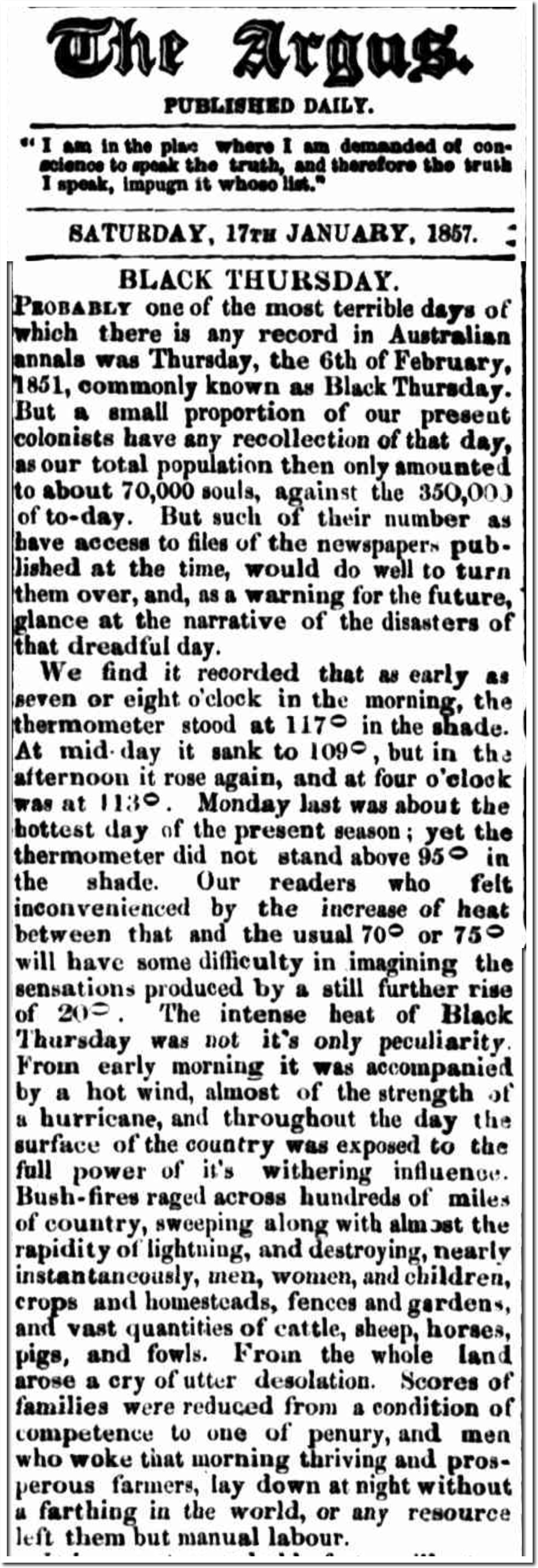BLACK THURSDAY.
PROBABLY one of the most terrible days of which there is any record in Australian annals was Thursday, the 6th of February, 1851, commonly known as Black Thursday. But a small proportion of our present colonists have any recollection of that day, as our total population then only amounted to about 70,000 souls, against the 350,000 of to-day. But such of their number as have access to files of the newspaper published at the time, would do well to turn them over, and, as a warning for the future, glance at the narrative of the disasters of that dreadful day.
We find it recorded that as early as seven or eight o’clock in the morning, the thermometer stood at 117° in the shade. At mid-day it sank to 109°, but in the afternoon it rose again, and at four o’clock was 113°. Monday last was about the hottest day of the present season ; yet the thermometer did not stand above 95° in the shade. Our readers who felt inconvenienced by the increase of heat between that and the usual 70° or 75° will have some difficulty in imagining the sensations produced by a still further rise of 20°. The intense heat of Black Thursday was not it’s only peculiarity. From early morning it was accompanied by a hot wind, almost of the strength of a hurricane, and throughout the day the surface of the country was exposed to the full power of it’s withering influence. Bush-fires raged across hundreds of miles of country, sweeping along with almost the rapidity of lightning, and destroying, nearly instantaneously, men, women, and children, crops and homesteads, fences and gardens, and vast quantities of cattle, sheep, horses, pigs, and fowls. From the whole land arose a cry of utter desolation.
17 Jan 1857 – BLACK THURSDAY. – Trove
CO2 was a very safe 280 PPM at the time.


